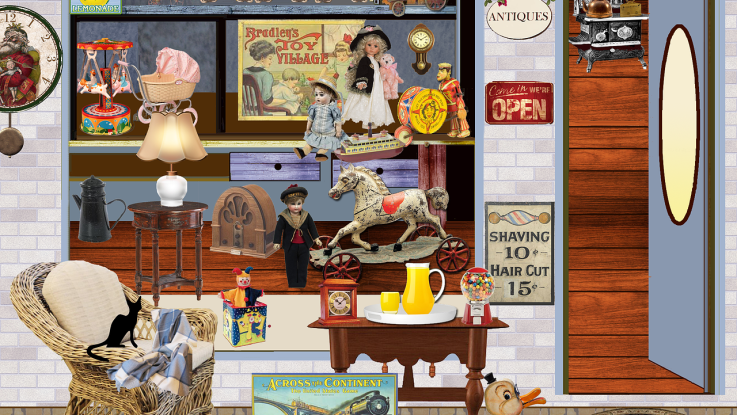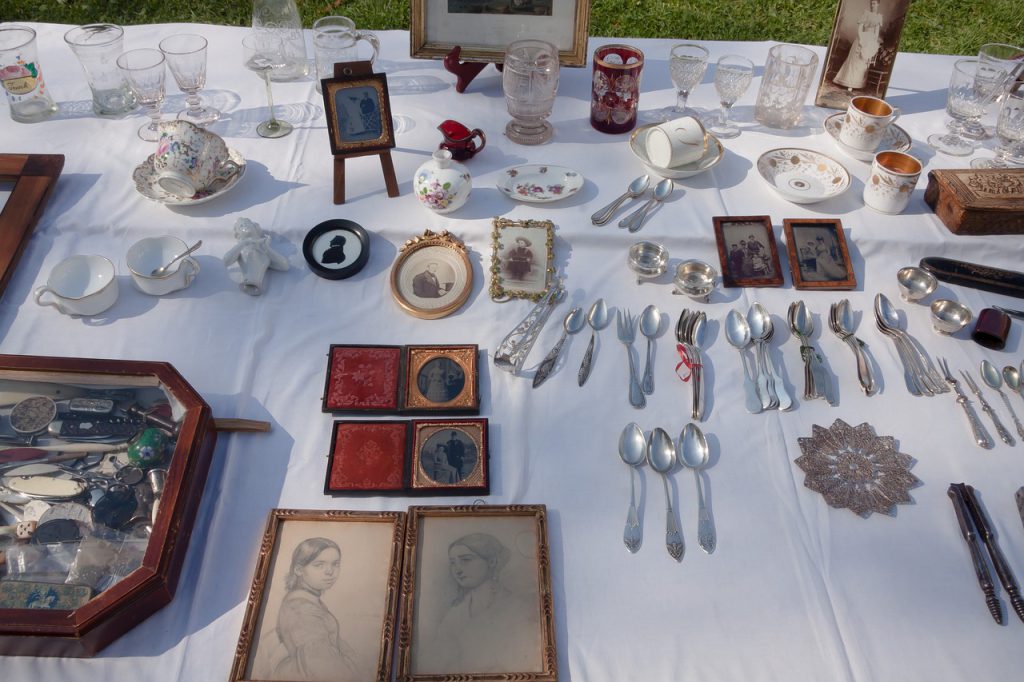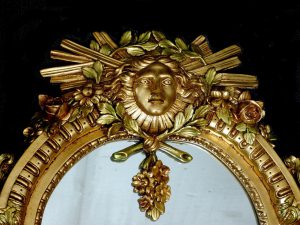
Do you love the thrill of the hunt when searching for treasures at antique shops or flea markets? Whether it’s a vintage piece of jewelry or an old piece of furniture, there’s something special about discovering an item with a rich history and story behind it.
However, with so many replicas and knockoffs, how to ensure you’re getting the real deal?
In this article, we’ll dive into the exciting world of identifying antique items and share tips and tricks to help you separate authentic antiques from imitations.
Identifying Antique Items

To identify antique items correctly, you should always consider a few things. Let’s explain them.
First, keep an eye out for the maker’s mark. This is like a secret code that tells you who made the object, where it came from, and how old it is. Look for it on the object itself or any attached tags and labels. Don’t worry if you can’t crack the code straight away. Plenty of experts, books, and online databases are available for help.
Next, let’s talk about authenticity. Just like you would spot a fake designer bag based on its unmistakable characteristics, you need to have a keen eye for reproductions and fakes in antiques. Look for signs of wear and tear, like scratches and dents, and examine the materials used to make the object. If you’re unsure, don’t hesitate to ask a professional to help you out.
Here, analyzing the style and design of the item also helps. Antique objects have unique styles and designs that speak about their history. Look for characteristic artistic features associated with known historical periods, such as the materials used, the shape and form of the objects, or any decorative elements.
Provenance is another thing you don’t want to miss. This concept refers to the object’s history of ownership and origin, which informs its value and helps determine authenticity. Ask for documentation, such as receipts, bills of sale, or letters proving the object’s previous ownership and origin.
Last, grab a magnifying glass or loupe, and get up close and personal with your antique objects. You should examine the details more closely, looking for any marks or signatures that might be difficult to see with the naked eye. Pay attention to the materials, construction of the objects, and any intricate details or flaws that may give you clues about their age and authenticity.
Most Common Antique Items

Here’s how to identify if the following common items are antiques.
Antique Furniture
Furniture from the past is like a time machine back to a world of intricate designs and traditional joinery techniques. To find if you have antique furniture, keep your eyes peeled for signs of aging like scratches and discoloration. Look for labels or markings on the furniture for more information about its maker and age. Research furniture styles of historical periods to which you believe the item might belong.
Antique Silverware
Antique silverware comes in many shapes and forms, from fancy dinner party decorations to family heirlooms. To see if you own an antique silver piece, look for hallmarks or markings on the silver itself. Check for signs, such as a distinct patina or tarnish (they form with age), and feel the weight of the silverware. Antique pieces tend to be heavier due to the thicker silver used in the past.
Antique Dolls
Antique dolls boast elaborate craftsmanship and exquisite details. To identify if your doll is antique, look for markings or labels that tell you about its maker and age. Then, take a closer look at the materials used to make a doll. Antique dolls often feature porcelain, bisque, or celluloid.
Antique Glassware
These pieces often feature beautiful decorations with complex designs and patterns. As with other items on this list, the first thing you should do to determine if you are dealing with an antique is looking for labels and the information they provide. Keep an eye out for signs like chips, cracks, and scratches. And pay attention to the thickness and color of the glass. Antique glassware may be thicker and less translucent than modern glassware.
Antique Jewelry
Do you have a piece of jewelry that feels like it belongs in a museum? Antique jewelry is often made from high-quality materials such as gold and silver and features unique designs and settings. Signs of old age and usage are always good indicators of antiquity, as well as the hallmarks of the specific piece.
Antique Professionals

If you get stuck while identifying antique items and need help, you may always count on antique professionals to lend you a hand. Because of that, it’s a good idea to understand just how valuable these professionals are and what their roles entail in the world of antiques.
Antique professionals specialize in identifying, evaluating, authenticating, and selling antique objects. From ancient Egyptian artifacts to vintage vinyl records, antique professionals deeply understand the historical significance and cultural value of objects from different periods and regions.
You can find antique professionals in museums, auction houses, shops, and galleries. They might also work independently as appraisers, consultants, or dealers.
Antique professionals are like art critics, using their expertise to help museums and cultural institutions build their collections. They identify culturally significant objects and advise on acquisitions, helping shape the cultural landscape.
In the auction world, they’re like financial analysts, using their market knowledge to help auction houses make informed decisions. They evaluate and appraise objects, crucial for setting accurate estimates and reserves.
How to Choose an Antique Dealer?
Education is a crucial ingredient in the recipe of choosing an antique professional. Many of these folks have studied art history, museum studies, or anthropology. They should know all about the history behind the antique objects, the materials they were made with, and the different cultural influences that shaped their design.
Experience is another essential factor. Antique professionals who spent years studying and handling antique objects have developed a keen eye for detail, allowing them to spot even the slightest variations in design, construction, and materials. They’re also aware of new developments and trends in the antique world.
This last one might not seem as crucial as others, but we believe a passion for their line of work is equally important. Those who sincerely appreciate the beauty and historical significance of antique objects will dedicate hours and hours to studying even the most minor details about these items. In addition, they love sharing their knowledge and passion with others, whether through teaching, writing, curating exhibitions or helping others find their way in the antique world.
Conclusion
You’re now a certified antique detective. With your new skills, you can confidently step into any flea market, thrift store, or antique shop and spot a valuable antique.
No more falling for cheap knockoffs or getting ripped by dishonest sellers. You can uncover hidden gems and build a collection of unique, valuable, and historically significant treasures.

Leave a Reply